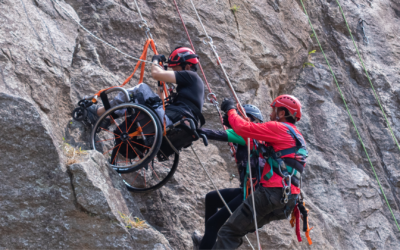
Trials and Tribulations of Disabled Travel
I travelled in to my local city recently. Not a big deal, given I live only 11 miles from the centre. Stroll down to the local station (10 mins) and hop on the train used to do very well.
Except now I can’t walk even 100 metres in one go – or do so more than once in a day – and I can’t use stairs.
So when I had two days’ notice of a meeting I wanted to attend, it took more planning than a perusal of time tables and more effort than a half-mile stroll.
The first arrangement I usually make is to find someone to travel with me. I have a mobility scooter, but scooters tend to come in one of two types: big, okay off-road and speed of up to 8 mph; and small, (sometimes) able to get on public transport, with a maximum speed of 4 mph.
Given that I like to walk my dog off-road and prefer to get to church as fast as possible (sitting on a scooter is surprisingly cold), I have a big scooter. It is too big for public transport, however longingly I think of days when trains had guard vans. Not that I’m old enough to remember those days, but my parents tell me about them. Perhaps Social Services would provide me with a free, public-transport-accessible scooter, but I have nowhere to keep a second scooter. As a result, if I ever wish to go outside my local vicinity – and quite often within it – I am reliant on other people being available.
As is normal, my friends and family have jobs and other commitments besides pushing me around. The particular day of my meeting, no-one was available to come with me.
Travelling alone on trains is doable if someone can take me to and from the stations, and I have 24-48 hours’ notice to book assistance within the train stations. On this occasion by the time I had exhausted my list of acquaintances I no longer had 24 hours’ notice. I had also discovered that I didn’t have anyone to take me to the train station, or pick me up when I came home.
At this point it would have been sensible to give up. If I were the kind of person to stop at sensible moments, perhaps I wouldn’t have become ill in the first place. I did spend a good 24 hours deciding what to do, wavering between going and not going, unable to tell if the meeting would be worth the effort. In the end I decided to go but by this point I had not even five hours before my train would be leaving, and I didn’t know what time train I would be getting back.
I rang the assistance anyway, and was told I would be provided with assistance if possible but it couldn’t be guaranteed. There was also no way to get assistance for the journey back given I didn’t know what time it would be at that point. I have always been suspicious of travel assistance, especially since a previous trip in which I had been forgotten despite more than 24-hours’ notice, with the result that I made a 2-hr detour. I usually ask a passenger to find someone for me, but on this occasion had left it too late. I decided to hope that the assistance would be available when I arrived, and that someone from the meeting would help me get back.
The issue now was that I had two ways to get to the station: pay for a taxi, or use my scooter. As the government decided when I applied for DLA that I am able to walk, I don’t have the money for taxis. The decision therefore was to take my scooter, lock it up at my local station, and use the station wheelchair to get around the destination station. The added complication was that there is no step-free access to the city-bound train platform. I therefore had to get on a train going in the opposite direction and wait for it to turn round and start the city-bound journey. As it is a small branch line, this added only half an hour to the journey.
At my destination, I was met with a wheelchair. I had previously planned to get a tram to the meeting, but as Google maps told me the tram stop was 0.1 miles from the meeting I knew it was too far to walk. I had spent some time deciding over relative benefits of physical versus financial cost, and had decided for financial cost, so the assistant took me to the taxi rank. The taxi driver did not know the location of where I was going, and spent some time and an extra £2 looking for it.
Once at the meeting, everything was much simpler. Everyone there was very helpful; carrying my bag, giving me an arm to lean on, waiting with me for the taxi to take me back to the station at the end of the meeting when they could have gone to the pub, coming with me in the taxi, collecting a station wheelchair to get me on to the train, and giving me the money for both taxi fares (£14). All that was left then was for one tired and aching body to ride her scooter home.
Source: Huff Post
Compartilhe
Use os ícones flutuantes na borda lateral esquerda desta página
Siga-nos!
Envolva-se em nosso conteúdo, seus comentários são bem-vindos!
Artigos relacionados
Teleton AACD. A pessoa com deficiência como protagonista.
Teleton AACD. A pessoa com deficiência como protagonista. Uma iniciativa internacional abraçada pelo SBT no Brasil.
Acessibilidade no ESG. Equipotel aborda o tema para o turismo.
Acessibilidade no ESG, para o mercado do turismo. Equipotel aborda a importância da inclusão da pessoa com deficiência.
Morte Sobre Rodas. Filme inclusivo foi candidato ao Oscar.
Morte Sobre Rodas. Dois protagonistas do filme, são pessoas com deficiência, um usuário de cadeira de rodas e outro com paralisia cerebral.






0 comentários